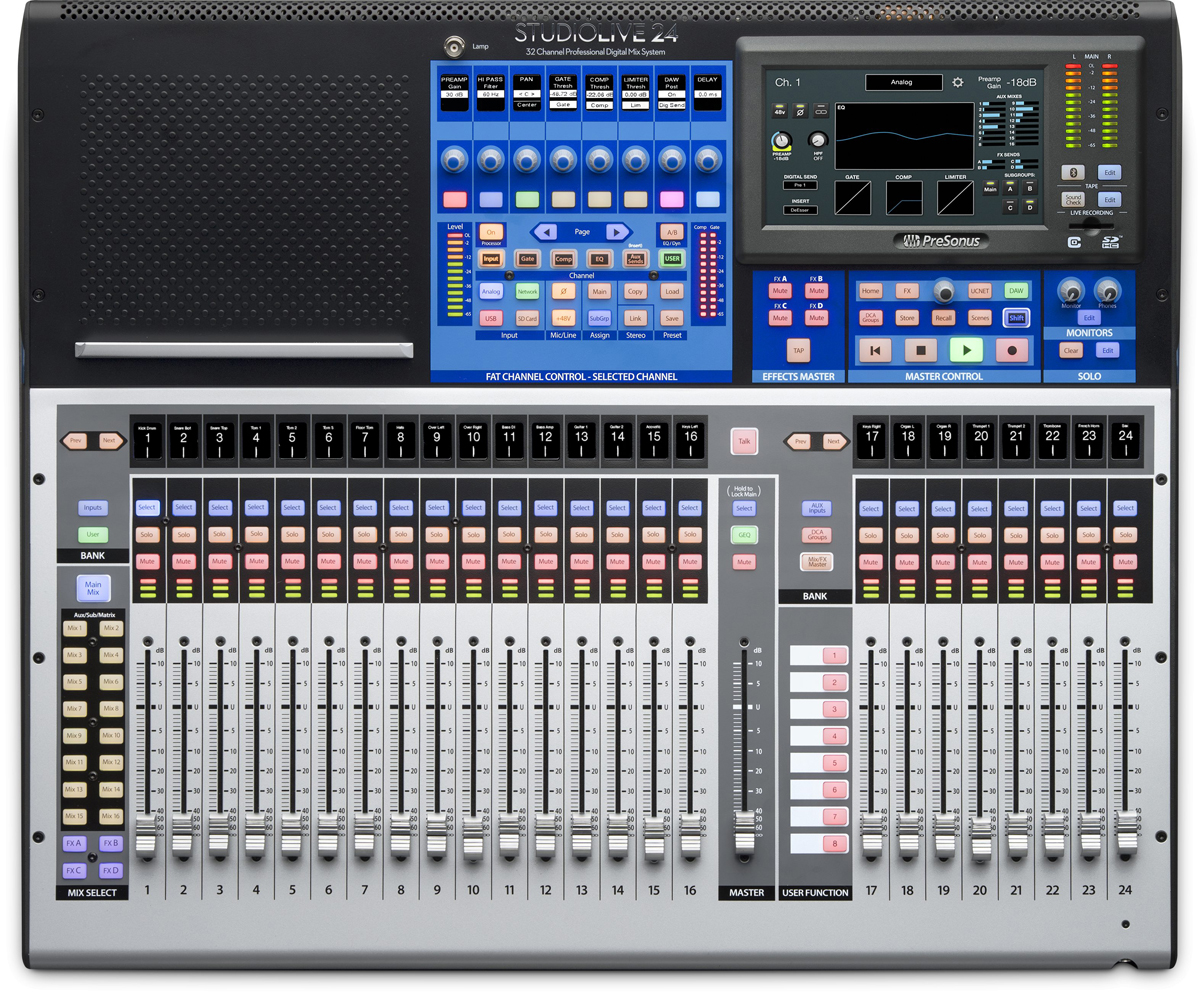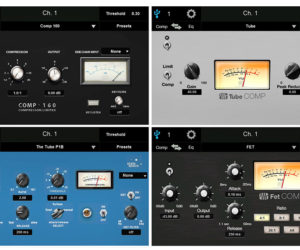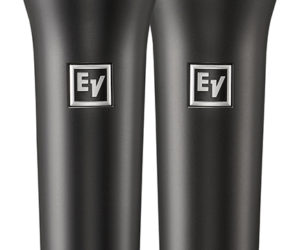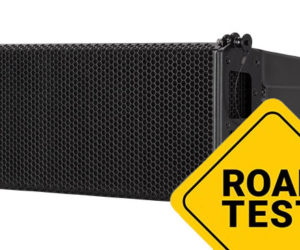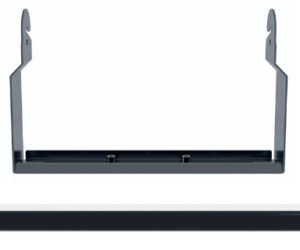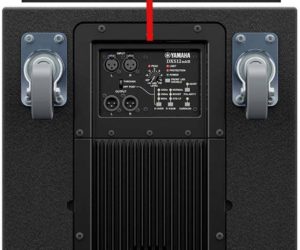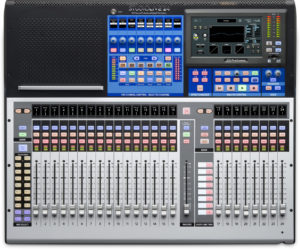New PreSonus StudioLive Series III digital mixers are available in 16, 24, and 32-fader models, with 24, 32 and 40 inputs, respectively. All offer touch-sensitive, motorized faders, recallable XMAX Class A preamps, and 32-channel mix DSP.
This third-generation version of the popular StudioLive platform is designed to provide further ease of use as well as enhanced workflow customization.
For example, as with previous models, the channel processing (called Fat Channel) includes an input or output delay, high-pass filter, gate, compressor, limiter, and parametric EQ, but now it also offers a plugin-style workflow with alternative vintage compressor and EQ models available on all channels. And in addition to Fat Channel processing, there are also new reverb and delay effects, again including vintage options.
All Series III models offer 16 FlexMixes that can be individually designated as aux, subgroup, or matrix mixes, with eight of them routing to XLR analog outputs and the other eight to 1/4-inch TRS.
Further, there are four fixed subgroups that also are available via USB or AVB (Audio Video Bridging) networking, making for a total of 20 mix buses plus the main mix, solo and FX buses. They also carry 24 DCAs onboard plus 6-band parametric EQ and delay on every output, and eight 31-band EQs.
One particularly exceptional feature is a built-in real-time analyzer (RTA) utilizing the industry-leading Rational Acoustics Smaart platform, specifically, streamlined versions of Smaart’s powerful Response and Locator modules.
All frame sizes include a 7-inch color touchscreen, moving faders, and 34 x 34 recording to SD, a 38 x 38 USB recording interface, and a 55 x 55 AVB recording interface. Further options and control are supplied by companion UC Surface touch-control software, Studio One DAW software, Capture multitrack recording software and QMix aux control software.
Further Capabilities
The StudioLive 24 supplied by PreSonus for this evaluation sports 25 touch-sensitive motorized faders, select buttons with user-assignable colors, transport controls for the recording and playback, and a customizable user layer. The mixer measures 7 x 25.6 x 23 (h x w x d) and weighs just 30 pounds.

There are 12 XLR inputs, 12 XLR/TRS combo inputs, an XLR talkback microphone input, dual stereo TRS aux inputs, an RCA tape input and output, two TRS monitor outputs, eight XLR mix outputs, eight TRS mix outputs, XLR left/right and mono outputs, and an RJ45 network connector. Also included is a Bluetooth wireless tape input.
My first impression after unpacking the StudioLive 24 in the shop is that the color touch screen, scribble strips and colored buttons make it easy to see at a glance what’s happening and what control you’re adjusting. This mixer is a perfect size for a variety of gigs, not too big for corporate events that need just a few inputs while still large enough to handle musical performances requiring a lot more inputs and sends.
Even though I wasn’t familiar with it, after scanning the location of the controls I had it passing audio within minutes. I love the onboard RTA and the ability to adjust the main EQ while looking at the RTA. It was easy to make channel and master adjustments, and just as easy to set up the FX and processing.
The preamps sound good, and overall, the StudioLive 24 should be able to handle any gig it’s asked to serve. The effects also sound quite nice, and to my ears, at least, especially the vintage plate reverb. Satisfied that everything was working as it should, it was time to work a few gigs.

